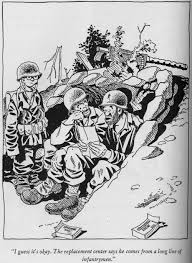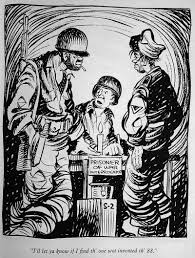Researching The American Comics During The World War - II
- Daily Strange

- Mar 9, 2020
- 3 min read

The comic book industry from the late 1930s continued to enlarge despite the lingering issues of the Depression economy. Since the United States entered World War II, the effect of paper rationing resulted in a winnowing of this marketplace of smaller publishers, but those limitations would gradually fall away, also. The writer DC Comics continued to lead with its favorite superheroes who sold war bonds and seemed to control into conflicts throughout the world. Comics also got a substantial increase when U.S. soldiers were sent abroad because comics functioned as simple, mobile entertainment for the troops on the transfer. Whether it had been for escapism or even nostalgia, comics provided a brief respite in the shocking tedium and uncertain agenda of army life. Out of all of the printed matter sent to soldiers in 1942, 30 percent were comic books. As they had been folded into camp equipment, handed in foxholes, and exchanged to sailors, comics propagate across the world, inspiring new subscribers along with a new production of comic artists. The U.S. army not only purchased tens of thousands of comic books to entertain the troops but also utilized several employees comic musicians to prepare comic artwork to their own books, plus they used comic books as an innovative way to educate soldiers about preserving their gear and getting along in overseas nations. Will Eisner was drafted and set to work crafting several of these books? Following the war, he'd continue to create informational comics to the authorities and the private sector.

UNCLE SAM QUARTERLY #3-1942-GEORGE TUSKA-WWII ART-HITLER-WILL EISNER-GOLDE G/VG
Many young comic artists have been sent into war, and their adventures overseas set the stage for a striking transformation in comics toward getting an adult-oriented medium. The army comic performer Bill Mauldin (1921- 2003) spent two decades (1943-1945) about the Italian front in World War II as part of the U.S. Army's 45th Infantry Division as a cartoonist and journalist that filed six cartoons every week for the U.S. military publication Stars and Stripes. Initially, he needed to work from the front with whatever equipment he could muster, Mauldin was finally given his very own Jeep as a mobile studio, however the affordable printing presses he worked with compelled him to draw more just with fewer amalgamated lines and more clearly delineated forms. Since the effort across Europe lasted, his troops moved from being clean-shaven children to bearded guys, slouching under the strain of fatigue. The light-hearted, fine-lined chummy comedy has become a single-frame comedian with two-thirds guys, Willie and Joe, who summed up their dire situation with sardonic humor: "I'm beginning to feel like a fugitive from the law of averages." Mauldin masterfully understated the heroics and play of this war and discovered ways to convey the ridiculous ailments that encircle a soldier's daily acts of courage.
Soldiers appreciated Mauldin's fine focus on the vital details of the camp equipment and firearms, catching the cadence and position of those dog-faced guys who made up the lowest positions of the army. First and foremost, he had been prepared to authenticate their battles and recognize their everyday aches and grievances against military jurisdiction. In a letter to Stars and Stripes, Gen. George S. Patton threatened to possess Mauldin's work prohibited by the 3rd Division if it didn't stop publishing what he called "Mauldin's scurrilous attempts to undermine military discipline." Gen. Dwight D. Eisenhower, however, defended Mauldin since he thought any censorship from the book would finally undermine morale. In the conclusion of the war, Mauldin returned into the United States a wealthy actor and proceeded to become a thriving editorial cartoonist; however, for the remainder of his life, he fought with the guilt he felt for being profited and become famous at a time of loss and anguish.
The 1950s saw an increase in the genre of war-themed comic books, and although they originally centered on the Korean War (1950-1953) and anti-Communist tales, the majority of the market gravitated toward imagining World War II. Starting in 1952, Robert Kanigher (1915-2002) edited and wrote DC Comics five-war comics that overtime contained the favorite war stories Sgt. Rock (1959, with artwork by Joe Kubert) and The Haunted Tank (1961-1987, with art by Russ Heath). War comics were profoundly indebted to the gritty realism of Bill Mauldin and carried on with all the close focus on the specifics of military life.
Only a couple of stories questioned the function of the war or the worth of heroism, but they frequently represented on futile profits made in a terrible sacrifice. War comics were a few of the first Egyptian adult-oriented comics; regardless of the horror and violence they often portrayed, many names could endure the subsequent backlash against adult comic books.
--------------



















.png)
Comments